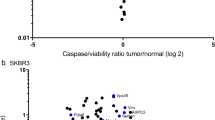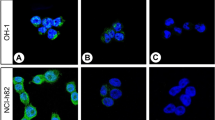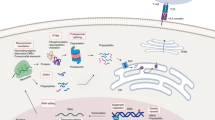Abstract
A method of epitope analysis is described in which the binding of one monoclonal antibody (MAb) to radiolabeled carcinoembryonic antigen (CEA) competes with the subsequent binding of an immobilised second MAb. From the degree of blocking obtained, we have identified both structurally related and independent epitopes on CEA. Using this technique to study fifteen MAbs, we have been able to recognise at least 6 unrelated epitopes of the CEA glycoprotein. Further characterisation of these epitopes was accomplished by means of immunohistochemistry. Of the fifteen MAbs, 6 were specific for CEA and reacted with at least 3 unrelated regions of the glycoprotein. Of the remaining 9 MAbs, 2 cross-reacted with erythrocytes, 5 with components of liver and 7 with polymorphonuclear neutrophils. Cross-reactions with liver were varied showing differential antibody specificity for bile canaliculi, Kupffer cells and bile duct epithelium. A high degree of correlation between epitope relatedness and immunohistochemical specificity was found. Two CEA-specific and 4 cross-reactive MAbs were also shown to react with ion-sensitive sites on the CEA glycoprotein.
This is a preview of subscription content, access via your institution
Access options
Subscribe to this journal
Receive 24 print issues and online access
$259.00 per year
only $10.79 per issue
Buy this article
- Purchase on Springer Link
- Instant access to full article PDF
Prices may be subject to local taxes which are calculated during checkout
Similar content being viewed by others
Rights and permissions
About this article
Cite this article
Harwood, P., Britton, D., Southall, P. et al. Mapping epitope characteristics on carcinoembryonic antigen. Br J Cancer 54, 75–82 (1986). https://doi.org/10.1038/bjc.1986.154
Issue Date:
DOI: https://doi.org/10.1038/bjc.1986.154
This article is cited by
-
Radioimmunoluminography: a tool for relating tissue antigen concentration to clinical outcome
British Journal of Cancer (1999)
-
The expression of Lewisx on carcinoembryonic antigen (CEA)-related glycoproteins of normal and inflamed oesophageal squamous mucosa
Glycosylation & Disease (1994)
-
Immunochemotherapy of human colon carcinoma xenografts in nude mice using combinations of idarubicin-monoclonal antibody conjugates
Immunology and Cell Biology (1993)
-
Antitumor effects of an antibody-carboxypeptidase g2 conjugate in combination with a benzoic acid mustard prodrug
Cell Biophysics (1993)
-
The value of radioimmunoguided surgery in first and second look laparotomy for colorectal cancer
Diseases of the Colon & Rectum (1991)



